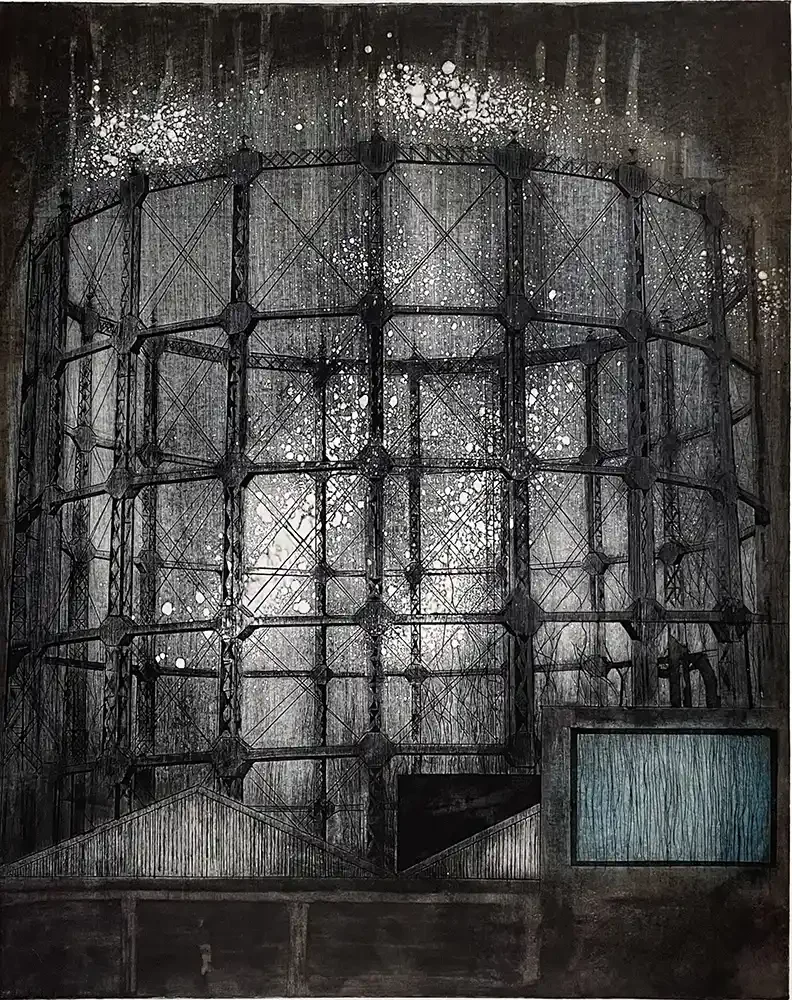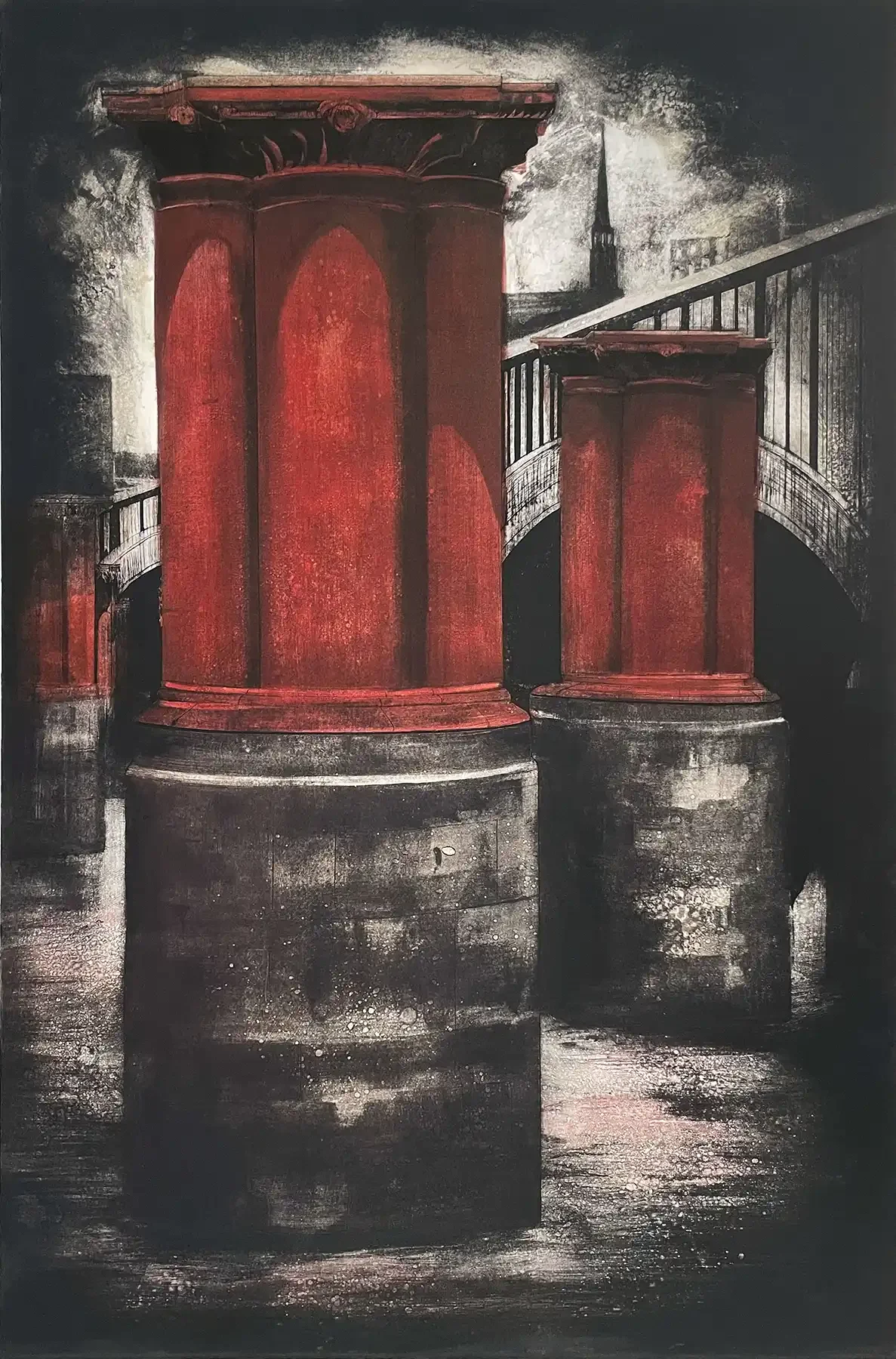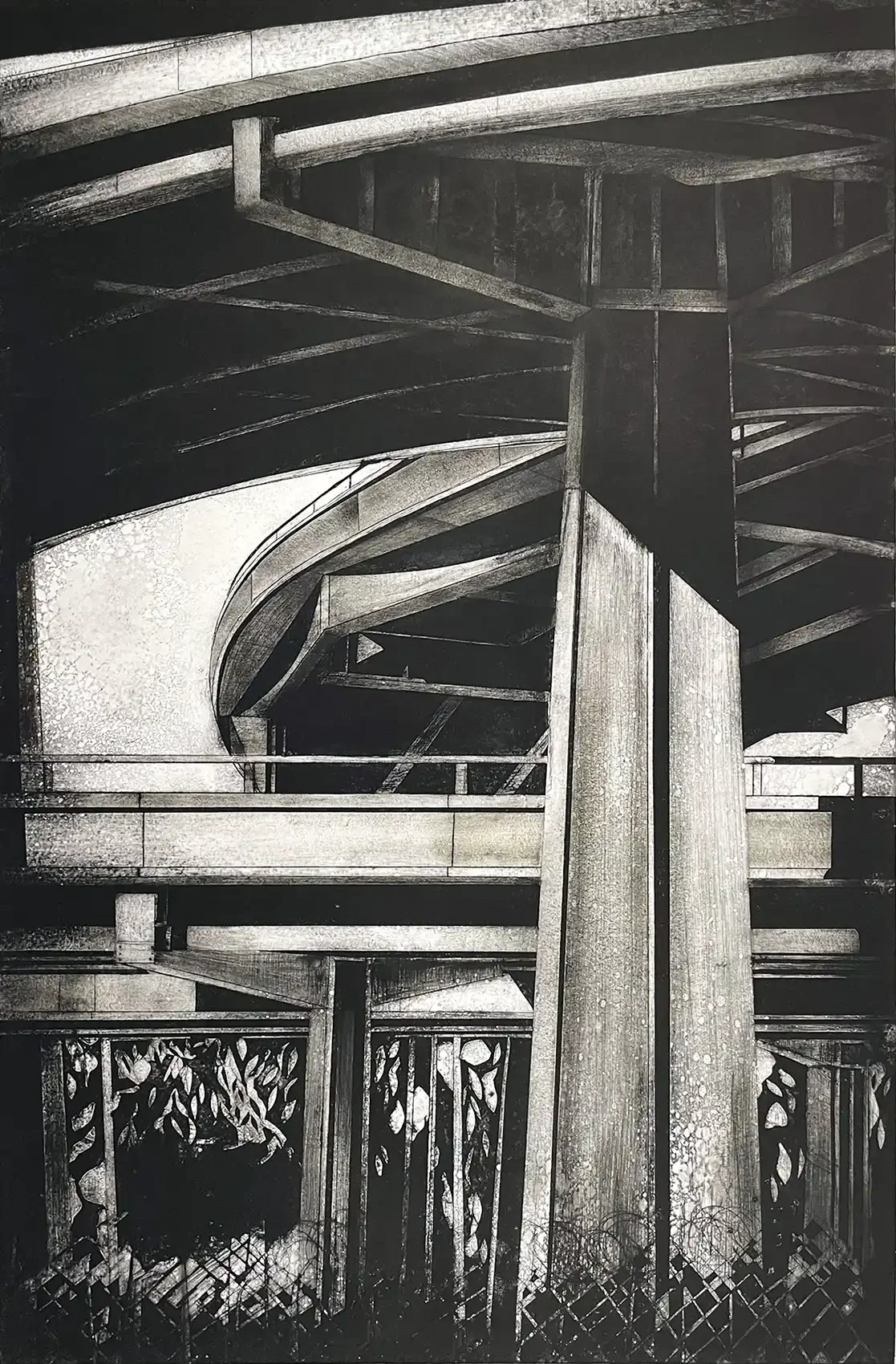Jenny Robinson - prints and biography
Jenny Robinson
Jenny Robinson is a British-born Master Printmaker whose work has evolved over four decades to explore architecture, urban decay, light, and memory. Born in 1957 in the United Kingdom and raised in Borneo, Robinson trained in printmaking at the West Surrey College of Art & Design. Her education laid the foundation for a career marked by both technical mastery and sensitive vision.
After living and working in London, Robinson spent over twenty years in San Francisco, followed by stints in Slovenia before relocating to Australia, where she founded the Jenny Robinson Print Studio in Sydney’s Inner West. This studio offers an open access facility, masterclasses, and major press equipment, enabling large-scale work and community engagement.
Robinson’s subject matter is often monumental architectural structures: bridges, façades, old cinemas, warehouses, and other built forms that border on the overlooked or abandoned. She is especially interested in capturing their inherent beauty and dignity, despite neglect, deterioration, or obsolescence. Her technique draws attention to light and deep shadow, solid compositions, texture, and juxtaposed color and form.
Her primary media include monotype and monoprint, chosen for the freedom of mark-making they allow. Overlays of ink, spontaneous marks, and multiple layers combine to produce saturated colors and complex surfaces. She also uses fragile, lightweight papers such as Gampi (Japanese paper) to enhance ideas of fragility, impermanence, and the tension between the monumental and the delicate.
Robinson’s work has been widely exhibited internationally, collected by institutions such as the Library of Congress, the Achenbach Foundation for Graphic Arts (San Francisco), the Ashmolean Museum (Oxford), among others. She has been awarded the Mario Avati Prix de Gravure (Paris, 2019) and fellowships and residencies in Venice, Vermont, and more.
Robinson’s artistic practice invites viewers to consider what is usually taken for granted in urban spaces. Her large-scale fragile works insist on looking, on feeling the texture of shadow, the weight of structure, and the slow poetry of decay. She blends architectural observation, material innovation, and emotional engagement to preserve not just images, but memory.








